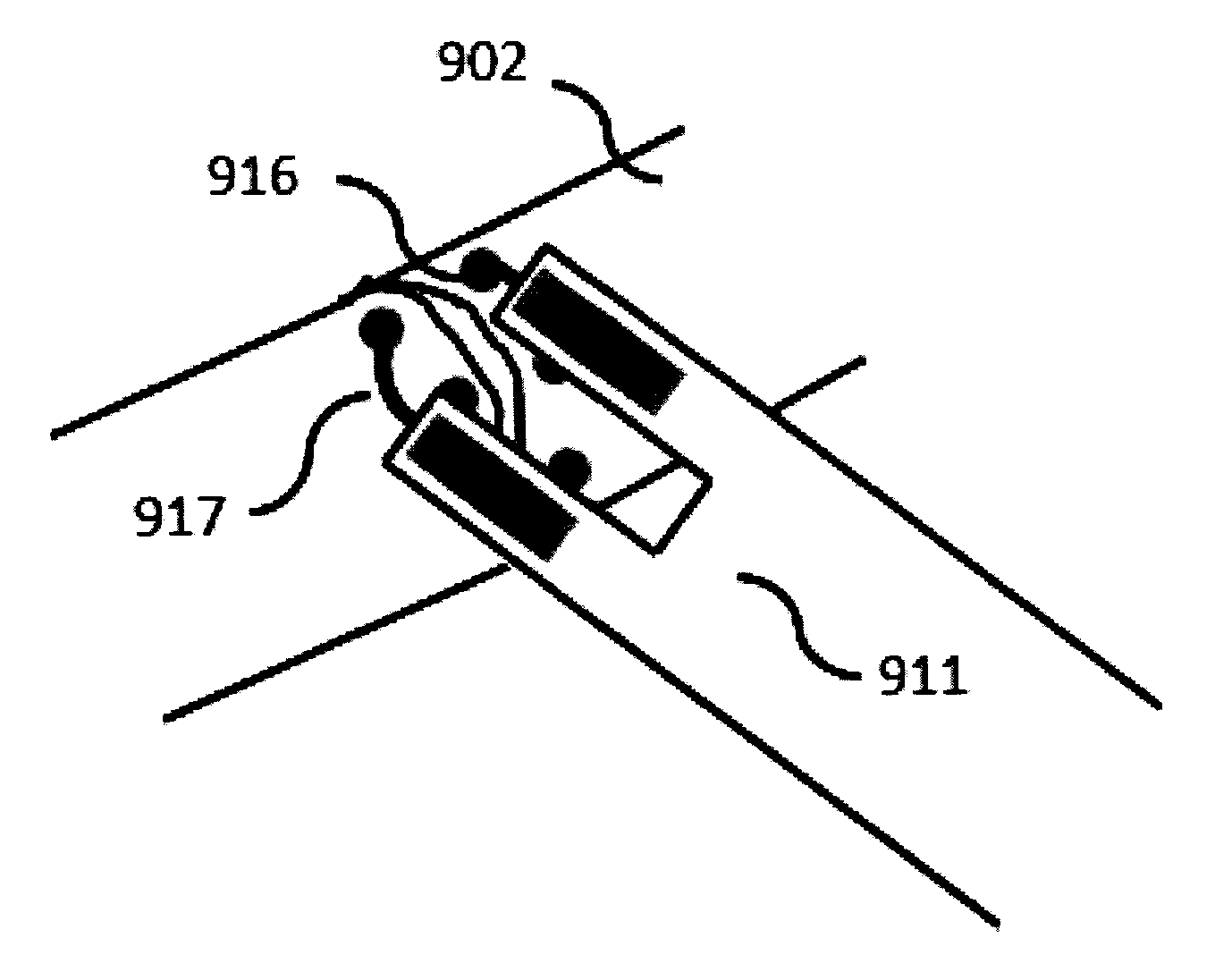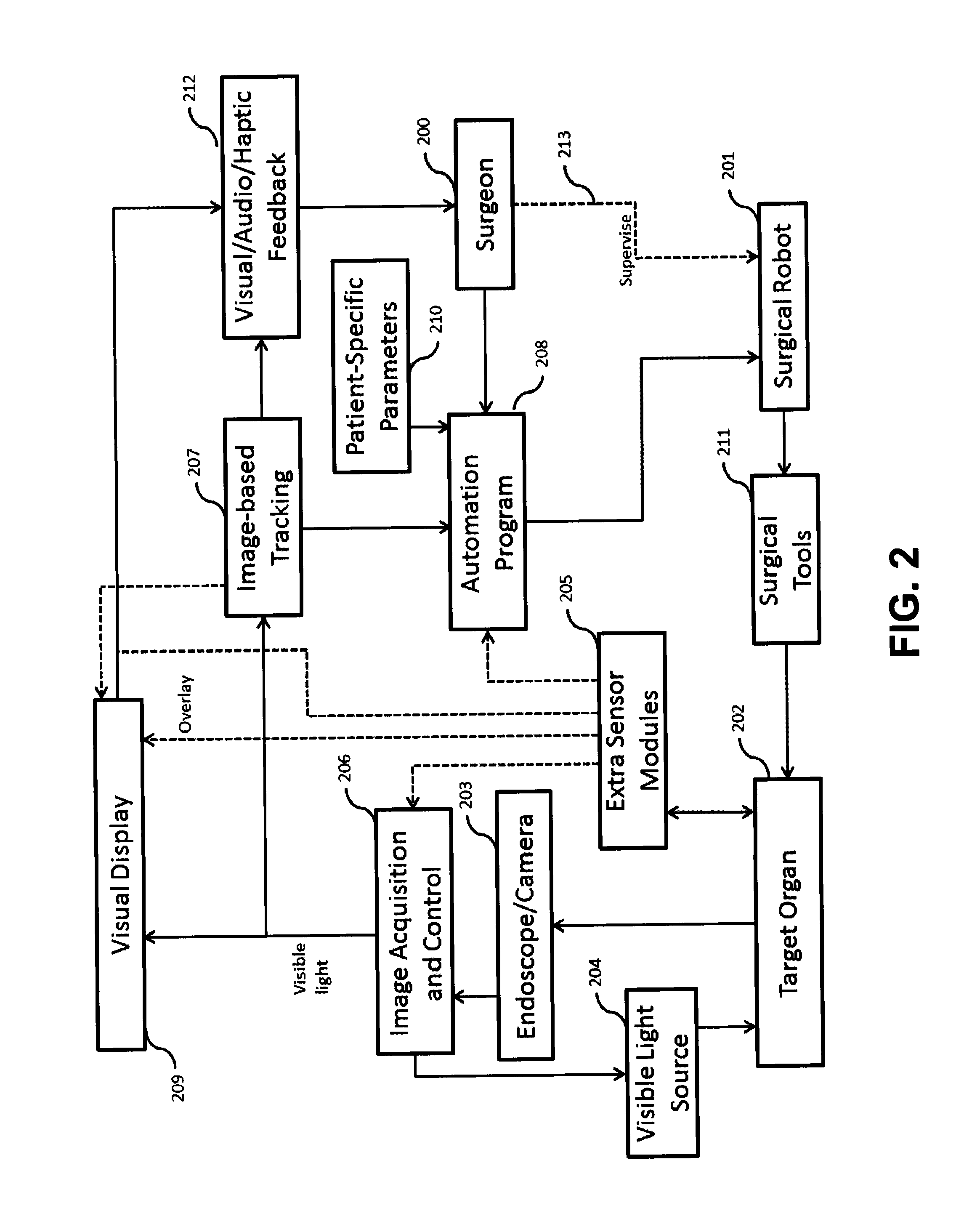Automated surgical and interventional procedures
a robotic surgery and interventional technology, applied in the field of robotic surgery, can solve the problems of limited robots to the dexterity and skill of operating surgeons, and may not be sufficient for robust real-time data
- Summary
- Abstract
- Description
- Claims
- Application Information
AI Technical Summary
Benefits of technology
Problems solved by technology
Method used
Image
Examples
Embodiment Construction
[0060]The embodiments of the invention describe a system for automation of surgical tasks. The embodiments consist of generating an automated surgical program based on clinical data, then applying the automated surgical program to patients during surgery.
[0061]FIG. 1 shows the overall workflow of utilizing the proposed system in a surgical operation. The surgeon starts 100 the surgery by utilizing manual tools 101, either performing segments of the operation that can be done efficiently manually, or preparing the surgical site for the robot 102. Once the patient has been prepared, the surgeon then introduces the robot 103 into the patient, and begins the robotic mode of operation 104. When deployed, the robot may be set to work with one of three modes of operation: master-slave 105, where the surgeon controls the robot's motion directly through controllers; semi-autonomous 106, where the robot performs tasks under the direction of a surgeon; or supervised autonomous 107, where the r...
PUM
 Login to View More
Login to View More Abstract
Description
Claims
Application Information
 Login to View More
Login to View More - R&D
- Intellectual Property
- Life Sciences
- Materials
- Tech Scout
- Unparalleled Data Quality
- Higher Quality Content
- 60% Fewer Hallucinations
Browse by: Latest US Patents, China's latest patents, Technical Efficacy Thesaurus, Application Domain, Technology Topic, Popular Technical Reports.
© 2025 PatSnap. All rights reserved.Legal|Privacy policy|Modern Slavery Act Transparency Statement|Sitemap|About US| Contact US: help@patsnap.com



